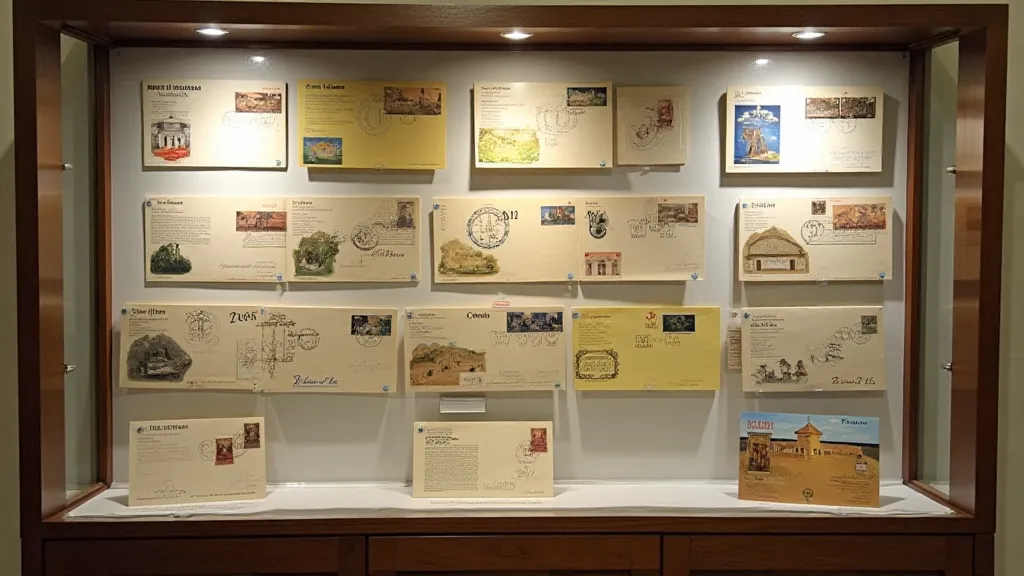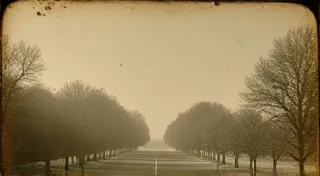Echoes of Empire: Examining First Day Covers as Reflections of Colonial History
The allure of stamp collecting, or philately, transcends mere hobbyism. It's a journey through time, a tangible connection to moments long past. While many collectors focus on vibrant commemoratives or classic errors, a specialized corner holds particular fascination: First Day Covers (FDCs). These unassuming envelopes, bearing a freshly-issued stamp and a postmark from the inaugural day of release, offer far more than just a decorative artifact. When those FDCs originate from colonial territories, they become windows into a complex and often uncomfortable past, whispering tales of empire, exploitation, and the enduring human spirit. They are, in essence, echoes of empire.
My own journey into this specialized corner began with a single, unassuming envelope. It was a First Day Cover from British Nigeria, dated 1938, commemorating the coronation of King George VI. The vibrant, slightly faded colors of the stamp depicted a regal portrait against a backdrop of palm trees - a postcard image of a "civilized" colony. But it was the postmark that truly captivated me. "LAGOS, N.I.," it declared, a marker of a world order long dismantled, yet undeniably present in that small piece of paper. Examining it, I felt a melancholic tug—the weight of history pressing down. It wasn't just a stamp; it was a statement, a declaration of dominion.
The Colonial Post: More Than Just Delivery
Understanding the significance of colonial FDCs requires understanding the role of the postal system itself. During the age of empire, the post wasn't merely a means of delivering letters and packages. It was a tool of governance, a vital artery connecting the metropole to its far-flung territories. The efficiency and reliability of the postal service were considered direct reflections of the empire's strength and its commitment to “civilizing” its subjects. Royal Mail, or its equivalent in territories like India, Australia, and the myriad African colonies, was meticulously managed, often with a focus on projecting an image of order and progress. The issue of postage stamps became a potent symbol of this control.
Consider the deliberate choices made in the design and issue of stamps in colonial territories. Often, images were chosen to emphasize the supposed benefits of British rule – depictions of railways, schools, or agricultural advancements, subtly reinforcing the narrative of benevolent guidance. Indigenous cultures and traditions were often marginalized or presented in stereotypical ways, serving to legitimize colonial authority. The very act of issuing a First Day Cover – a carefully orchestrated publicity event – served to celebrate the empire's ongoing presence and to reinforce its control.

Unveiling the Complexities: Beyond the Postcard Image
The romanticized image of a colonial FDC – a piece of history, a collectible treasure – can easily obscure the darker realities of empire. These seemingly innocent envelopes are inextricably linked to a history of exploitation, displacement, and cultural suppression. The very notion of a "First Day Cover" assumes a level of access and participation that was often denied to the colonized population. Who was benefiting from this symbolic celebration of empire?
Examining FDCs from territories like British India, French Indochina, or Belgian Congo reveals stark disparities. While the colonizers proudly issued stamps commemorating their own achievements, the concerns and aspirations of the indigenous people were often ignored or suppressed. Postmarks, seemingly innocuous details, can reveal a great deal. They might indicate specific administrative centers, serving as subtle reminders of the colonial power structure. Studying the routing marks – the codes that tracked the envelope's journey – can reveal the extent of the colonial infrastructure, and the degree of control exerted over the flow of information.
It's crucial to approach these artifacts with a critical eye, recognizing their inherent biases and understanding the power dynamics at play. Collectors have a responsibility to engage with this history, not simply as enthusiasts of rare stamps, but as informed citizens aware of the complexities of the past. Collecting these FDCs can be an opportunity to learn and to reflect on the lasting legacies of colonialism.
Craftsmanship and Preservation: A Collector’s Perspective
Beyond the historical significance, colonial FDCs also possess intrinsic value as examples of craftsmanship. The stamps themselves were often beautifully designed and meticulously printed, showcasing the artistry of the era. The envelopes, though often simple, demonstrate the care taken in their preparation. The postmarks, hand-applied with considerable skill, are unique and irreplaceable. These small details contribute to the overall appeal and value of the collectible.
Preservation is key to maintaining the integrity and value of these fragile artifacts. Proper storage in archival-quality sleeves and albums is essential to protect them from damage caused by light, moisture, and handling. Avoid excessive exposure to direct sunlight, which can fade the colors and weaken the paper. Gentle cleaning with a soft brush can remove surface dust and debris. Restoration, while sometimes tempting, should be approached with caution, as any alterations can diminish the historical authenticity of the cover.

Rarity and Value: The Market Dynamics
The rarity and value of colonial FDCs are influenced by a complex interplay of factors. Condition is paramount; covers in pristine condition command significantly higher prices than those with defects or heavy usage. Scarcity is another crucial element; FDCs from territories with limited postal services or those issued in small quantities are naturally more valuable. Historical significance also plays a role; covers commemorating important events or those bearing unique postmarks can attract significant interest from collectors.
The market for colonial FDCs is niche, but active. Prices can range from a few dollars for common covers to hundreds or even thousands of dollars for exceptionally rare and well-preserved examples. Auction houses specializing in philately are a primary venue for trading these collectibles, but online marketplaces also provide opportunities for both buyers and sellers. Building a strong understanding of the market dynamics is essential for making informed collecting decisions.
My own collection, started with that single Nigeria FDC, has grown to encompass a broader range of colonial territories. Each cover tells a story, a fragmented glimpse into a vanished world. They serve as a constant reminder of the complex and often contradictory forces that shaped the modern era.

The appreciation of colonial FDCs is not simply about acquiring rare stamps; it’s about engaging with a profound and challenging history. It's about understanding the human cost of empire and honoring the resilience of those who lived under its shadow. It's about recognizing that even the smallest piece of paper can hold a powerful echo of the past.





